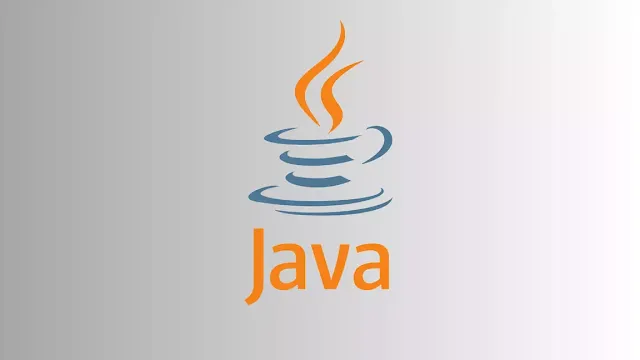Section 4 Quiz 1 - L1-L2
1. Which of the following wild card character is used to import all the classes in a particular package?
* (*)
!
~
;
Correct
(1/1) Point
2. The classes of the Java class library are organized into packages.
benar (*)
Palsu
Correct
(1/1) Point
3. Which two are valid import statements of the Scanner class?
(Pilih semua jawaban yang benar)
import java.util.*; (*)
import java.util.Scanner; (*)
import java.util;
import java.*;
Correct
(1/1) Point
4. Given the import statement:
import java.awt.font.TextLayout;
which is the package name?
java
java.awt.font (*)
java.awt
awt.font
Incorrect. Refer to Section 4 Lesson 2.
(0/1) Point
5. Import statements are placed above the class definition.
benar (*)
Palsu
Correct
6. Which package is implicitly imported?
java.io
ava.awt
java.math
java.lang (*)
Correct
(1/1) Point
7. The import statement consists of two parts.
import package.className;
One is the package name and the other is the classname.
benar (*)
Palsu
Correct
(1/1) Point
8. Which of the following are the arguments in the following method?
Employee emp = new Employee();
emp.calculateSalary(100000, 3.2, 15);
calculateSalary(100000, 3.2, 15);
emp.calculateSalary(100000, 3.2, 15);
100000, 3.2, 15 (*)
emp
Correct
(1/1) Point
9. An argument is a value that's passed during a method call
benar (*)
Palsu
Correct
(1/1) Point
10. In Java, methods usually hold the properties of an object.
benar
Palsu (*)
Correct
11. How many arguments does the following method accept?
public void simpleInterest(double principal, int noofYears, double interestRate){
System.out.println("The interest rate is " +interestRate );
}
0
3 (*)
2
1
Correct
(1/1) Point
12. Which is a valid way of calling the testMethod in the TestClass? Assume a testInstance has been created.
public void testMethod(int x, double y){
System.out.println(x/y);
}
testInstance.testMethod(10, 3.5, 0);
testInstance.testMethod(3.5, 10);
testInstance.testMethod(10, 3.5); (*)
testInstance.testMethod(3.5);
testInstance.testMethod(10);
Correct
(1/1) Point
13. Object instantiation is done using what keyword?
void
new (*)
instance
System
Correct
(1/1) Point
14. Which of the following scenarios would be ideal for writing a method?
When you don’t want to repeat similar lines of code to describe an object’s behavior. (*)
When you don’t find similar lines of code to describe an object’s behavior.
To group similar data types together
For every five to six lines of code.
Correct
(1/1) Point
15. Which of the following statements are true?
(Pilih semua jawaban yang benar)
Methods can never be written with more than four parameters.
Methods cannot be written with parameters.
Methods can be written with any number of parameters. (*)
Parameter values can never be used within the method code block.
Parameter values can be used within the method code block. (*)
Correct
PERCOBAAN KE 2 QUIZ
1. A character preceded by backslash is called an escape sequence.
benar (*)
Palsu
Correct
(1/1) Point
2. Given the expression:
String message = "Hello World";
Which is the String Literal?
String message = "Hello World";
message
String message
Hello World (*)
Correct
(1/1) Point
3. Which two statements compile?
(Pilih semua jawaban yang benar)
String size = ‘M’;
char size = ”m”;
String size = “M”; (*)
char size = ’m’; (*)
Correct
(1/1) Point
4. The print() method prints to the console and automatically creates a line.
benar
Palsu (*)
Incorrect. Refer to Section 3 Lesson 3.
(0/1) Point
5. A String can be created by combining multiple String Literals.
benar (*)
Palsu
Correct
6. An Object cannot have String objects as properties.
benar
Palsu (*)
Correct
(1/1) Point
7. System.in readies Scanner to collect input from the console.
benar (*)
Palsu
Correct
(1/1) Point
8. The Scanner class accepts input in which form?
Future
Integer
Tokens (*)
Callables
Correct
(1/1) Point
9. These two code fragments perform the same task.
// Fragment 1
String inputString = JOptionPane.showInputDialog("??");
int input = Integer.parseInt(inputString);
input++;
// Fragment 2
int input = Integer.parseInt(JOptionPane.showInputDialog("??")) + 1;
benar (*)
Palsu
Correct
(1/1) Point
10. A double with the value of 20.5 is cast to an int. What is the value of the int?
21
25
20.5
20 (*)
Incorrect. Refer to Section 3 Lesson 4.
11. The Java compiler automatically promotes byte, short, and chars data type values to int data type.
benar (*)
Palsu
Correct
(1/1) Point
12. Which two statements are correct about the usage of an underscore?
(Pilih semua jawaban yang benar)
Underscores change the value of the number.
Underscores help make large numbers more readable. (*)
Underscores do not affect the value of the variable. (*)
Underscores help the compiler interpret large numbers.
Correct
(1/1) Point
13. Which two statements are true about type casting?
(Pilih semua jawaban yang benar)
Type casting retains the size of the value or the original data type.
Type casting changes the type of the value stored. (*)
Type casting cannot be performed on equations.
Type casting lowers the range of possible values. (*)
Correct
(1/1) Point
14. Which is a valid way to parse a String as an int?
nt intVar1 = (int)"100";
int intVar1 = Integer.parseInt("One Hundred");
int intVar1 = Integer.parseInt("100"); (*)
int intVar1 = "100";
Correct
(1/1) Point
15. What is parsing?
Converting numeric data to text
Converting numeric data to a specified numeric data type
Reading text from numeric data
Converting text to numeric data (*)
Correct

Posting Komentar untuk "Section 4 Quiz 1 - L1-L2"